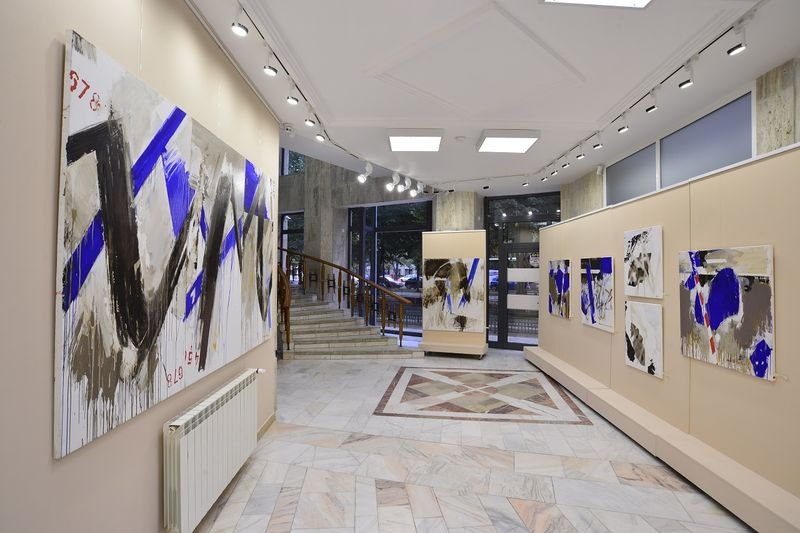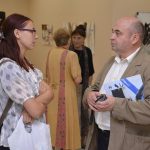During the period September 22nd and October 29th, 2014, Senso Gallery hosted the painting exhibition “Nirvana II” by Corneliu Vasilescu.
The opening of this exhibition was an extended event, attended by many guests, artists, journalists and friends of the artist: Marin Gherasim, Adrian Guta, Petru Lucaci, Octavian Andronic, Buzu, Vasile Muresan Murivale, Elena Surdu Stanescu and many others. The public present at the opening also enjoyed a nice catalogue edited through Catena for Art program, with the paintings of the artist Corneliu Vasilescu.
“The present exhibition brings together compositions of equal sizes (140 x 120 cm) numbered from I to V and obviously interconnected. Statement-like, the first picture allows the view to access an autonomous space, in which picturality has established its norms and forms of representation; deep and mysterious redness is deliberately and gradually removed, by enveloping, and then withdrawn in the integrated signature as a text in the composition ensemble. The eye searches in vain for figurative landmarks, narrative pretexts, themes, genres or motives, while the number of colours and contrasts decreases progressively and, usually, dramatically; the works of Cornelius Vasilescu, in which spatial depth is not altogether ruled out, refer only to their individual system of signs, conveyed through transparent fulgurances and chromatic opacity installed only temporary, since they are always under attack and tend to incessantly metamorphose; canvases in this short series (and those who have not found the necessary space – because the painter works hard and is prolific – on the generous picture rails of Senso Gallery), propose to plunge deeply into a meditative state of tension which, once identified and felt empathetic, can enhance, gradually, its intensity.
Displayed on a generous surface and delimited in uneven states, The Right Composition is dominated by modulated geometric shapes, the paths of which are affected, as disturbing factors, by path interruptions, breaks or deviations; anxiety creeps in the declarative amplitude of the cadences, the echoing of some colours is stalked by dissonant factors, the paths are sometimes reduced to points or lines, time and doubt have mysteriously adumbrated.
Numerical composition adds some colours in the canvas that do not radically alter the appearance of the image, but they interfere with the overall impression (Corneliu Vasilescu, for a time museographer at the National Office for Documentation and Art Exhibitions knows how to support and highlight a coherent visual path); pure, superimposed or permeable to the pigmentation mixture, opaque or transparent, the colours allow the numbers, located at the periphery of the visual field, as if they were randomly involved in the making of the artwork, intervene actively in the image, and propose specific elements for an overall reading.
In other works, according to title and eloquence cautiously induced by the artist, to live up to the viewer, directions of appreciation and interpretationSigns(brown, sound, numbered from I to III) can metamorphose intoSignals(among which sfatos and ritos by means of which the author conveys warnings), referring to the shape of a dragon that has long ceased to impose power, conscious of its futility, implying a remote and solitary Safari , where only visual attractions are hunted (the recent stage of his creation, the painter states, restricts the amount of previously used means to the “synthesis of gesture and sign, reducing chromatic support to the maximum”), they charge with authority when the suitable directions and angles bring the gesture of victory, largely in the space, which at the same time draws (either the painter wanted this, or ignored such intent) the initial letter of his surname – V(asilescu)”. – Doina Pauleanu PhD, art critic and manager of Constanta Art Museum.
This event was conducted with the support of Catena Group, through Catena for Art Program, and the Fildas Art Foundation.


